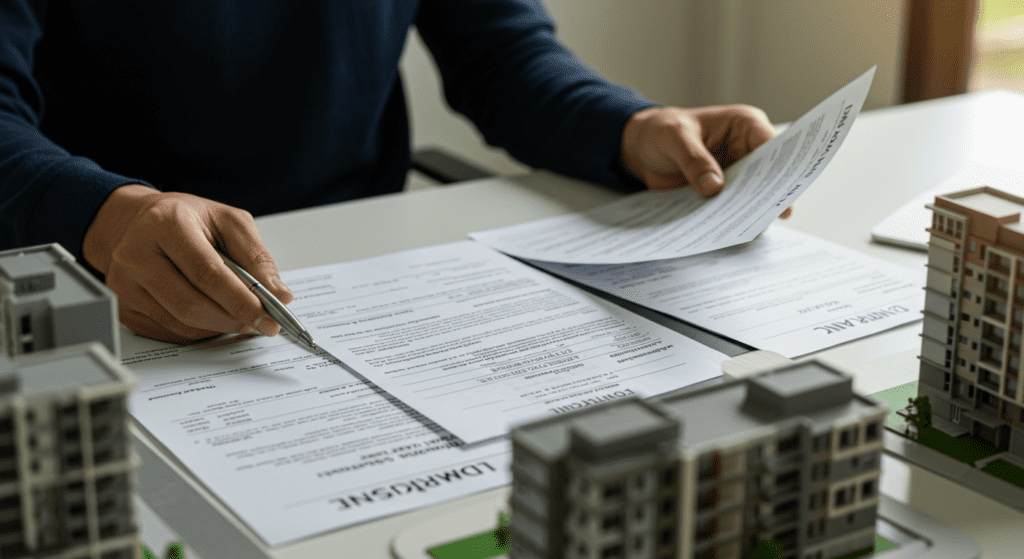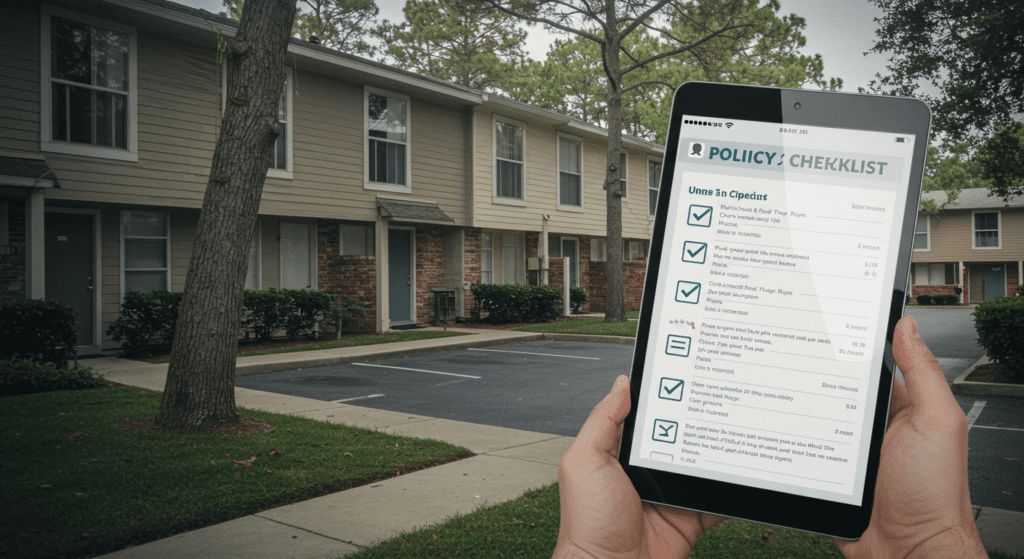- Overview of Multi-Unit Property Insurance
- Identifying Specific Risks and Coverage Needs
- Analyzing Policy Coverage Details
- Evaluating Exclusions and Limitations
- Reviewing Liability and Legal Protection
- Comparing Premiums and Deductibles
- Assessing Claims Procedures and Insurer Reputation
- Investigating Additional Endorsements and Riders
- Final Considerations and Professional Guidance
1. Overview of Multi-Unit Property Insurance
Multi-unit properties, such as apartment complexes, condominiums, and commercial mixed-use buildings, face unique risks. Insurance policies for these properties must address a range of hazards, including fire, theft, natural disasters, and liability issues. Evaluating insurance policies for multi-unit properties requires a comprehensive understanding of these risks and coverage options. This guide provides a step-by-step approach to help property owners make informed decisions about protecting their investments. In this article, we explore key factors such as identifying risks, analyzing policy details, evaluating exclusions, and comparing premiums, all while emphasizing the importance of professional guidance.

2. Identifying Specific Risks and Coverage Needs
The first step in evaluating insurance policies is to assess the specific risks your property faces. Consider factors such as location, building age, occupancy rates, and history of previous claims. For example, properties in areas prone to hurricanes or earthquakes require policies with tailored natural disaster coverage. Similarly, properties with extensive common areas might need enhanced liability protection due to potential accidents.
Begin by listing all potential hazards that could affect the property. Think about fire safety measures, security systems for burglary protection, and measures to mitigate water damage. If the property is in a region known for severe weather, check whether additional endorsements are needed. Understanding these specific risks helps you prioritize what coverage is essential, and ensures that you make an informed selection when reviewing policy options.
3. Analyzing Policy Coverage Details
Once you identify your risks, closely analyze the coverage details provided by insurance policies. Start by examining the standard coverage offered by the policy. Look at what perils are covered, the limit amounts, and any conditions attached to those coverages. Multi-unit property insurance should ideally address both property damage and liability to protect against claims from tenants or visitors.
Pay attention to optional coverages that can be added to further enhance protection. These might include loss of rental income, equipment breakdown coverage, or environmental liability. An ideal policy balances comprehensive protection with cost-effectiveness by matching the property’s specific needs to the insurer’s suite of coverages.

4. Evaluating Exclusions and Limitations
No insurance policy is without its exclusions or limitations. These clauses can significantly impact the scope of protection available to a property owner. Exclusions may include damages from maintenance issues or specific types of natural disasters that are not covered under a standard policy. Limitations might involve caps on payouts for certain types of claims or restrictions on how claims are processed.
When evaluating exclusions, carefully review each clause and ask whether it could be a concern based on your property’s characteristics. For instance, if your property is located in an area prone to floods, it is crucial to know whether flood damage is excluded or only partially covered. Reach out to the insurance provider for clarification if certain language is ambiguous, and consider purchasing additional endorsements when exclusions leave critical gaps in coverage.
5. Reviewing Liability and Legal Protection
Liability coverage is a critical aspect of multi-unit property insurance. This type of coverage protects against claims resulting from accidents that occur on the property, such as slip and fall incidents in common areas or injuries in shared facilities. The policy should include safeguards that cover legal expenses, settlements, and other associated costs arising from lawsuits.
Ensure the policy offers adequate liability limits that reflect the potential financial impact of legal claims. Compare these limits with the overall value of the property and visitor exposure. Many policies provide a blanket limit for liability; however, ensure it is high enough to protect against significant lawsuits. It is also beneficial to determine whether the policy offers legal defense services, as these can greatly reduce out-of-pocket costs in case of litigation.

6. Comparing Premiums and Deductibles
Premiums and deductibles are fundamental aspects of any insurance policy decision. Premiums determine the cost of the policy over the term, while deductibles represent the out-of-pocket expenses that fall on the property owner before the insurer makes payment on a claim.
When comparing policies, look at the premiums in relation to the coverage offered. A lower premium might seem attractive, but if the deductible is unreasonably high or the coverage is inadequate, the policy might not be cost-effective in the long run. Conversely, a higher premium may be justified if it offers extensive coverage with lower deductibles. Evaluate your cash flow and risk tolerance to arrive at a balance that ensures you can afford potential deductibles without compromising the financial stability of your property management operations.
7. Assessing Claims Procedures and Insurer Reputation
In the event of a loss, the claims procedure becomes paramount. A policy with a complicated or slow claims process can add to the stress during a crisis. Look for insurers that offer streamlined, digitally enabled claims procedures with clear steps and prompt customer service. Read customer reviews and seek testimonials to gauge the responsiveness and fairness of an insurer’s claim process.
In addition to service quality, assess the insurer’s overall reputation in handling complex claims involving multi-unit properties. Look for companies with a history of stability and strong financial ratings, as these are likely to handle claims efficiently. A well-respected insurer with transparent processes and a history of timely claims processing is a critical factor for peace of mind. This research can be done through professional rating agencies and industry publications, allowing you to determine if the insurer is well-equipped to meet your needs during unforeseen events.

8. Investigating Additional Endorsements and Riders
While the base policy may meet general requirements, many property owners find that additional endorsements and riders are necessary. These endorsements can tailor a standard policy to address specific needs that may not be covered otherwise. For instance, additional coverage might be added for earthquake damage, equipment failure, or even terrorism-related events, depending on the location and type of property.
Riders can also enhance liability coverage, such as protecting against cyber risks where property management systems are vulnerable to hacking. Take time to evaluate available endorsements and determine if they align with the unique aspects of your property’s risk profile. Consulting with an insurance specialist can provide insights into which options are most beneficial and cost-effective, ensuring your property receives comprehensive protection that extends beyond basic coverage.
9. Final Considerations and Professional Guidance
After gathering all relevant information, take a moment to consider the overall balance of your insurance options. Evaluate each policy based on the identified risks, coverage details, exclusions, premium costs, liability limits, and additional endorsements. A final review should include comparing the total costs against potential claim scenarios, ultimately determining whether the policy provides adequate protection relative to the risks.
Professional guidance remains a key component in this decision-making process. Insurance agents and brokers specialize in multi-unit property policies and can help navigate complex policy language, ensuring no significant omission or hidden cost is overlooked. These professionals can also offer advice on negotiating terms or finding discounts based on a property’s claims history or safety improvements made over the years.
Revisit the policy annually. As market conditions, local regulations, and property features evolve, so too should your insurance coverage. By conducting regular reviews of your policy and risk assessments, you maintain a level of protection that adapts to changes, ensuring comprehensive coverage over the long term. Insurance is not a static purchase but an evolving safeguard that requires ongoing attention and adjustments.
Property owners should also consider leveraging professional networks or online forums where experiences from other multi-unit property managers are shared. Being informed by peers can sometimes reveal additional considerations or identify common pitfalls when dealing with insurers.

10. Conclusion
In conclusion, effective evaluation of insurance policies for multi-unit properties is not just about securing a document in a binder. It is about ensuring peace of mind, knowing that your investment is well protected from the myriad risks that such properties face. By identifying specific risks, analyzing policy details, examining exclusions and limitations, reviewing liability protection, comparing premiums and deductibles, assessing claims procedures, and investigating additional options, property owners can build a robust defense against unforeseen legal and financial challenges.
Remember that every multi-unit property is unique. The evaluation process must be personalized, taking into account the property’s geographical location, building characteristics, tenant behaviors, and historical claim data. Professional guidance and regular reviews are keys to maintaining an adequate insurance program that evolves with your property. With a methodical approach and attention to every detail in policy parameters, property owners can confidently navigate the insurance landscape and ensure that their investments are secure.
Selecting the right insurance policy will not only provide protection during unforeseen events but also can reduce overall operational costs in the years ahead. With a firm understanding of policy terms and a proactive risk management approach, you can save time, money, and stress should a claim be made. The confidence in your coverage translates to better management of your multi-unit property and a more secure future for both owners and tenants.
By following these structured steps, you can make informed decisions that align with your overall risk management strategy, ensuring that every policy aspect contributes to a comprehensive and effective insurance plan for your multi-unit property.
